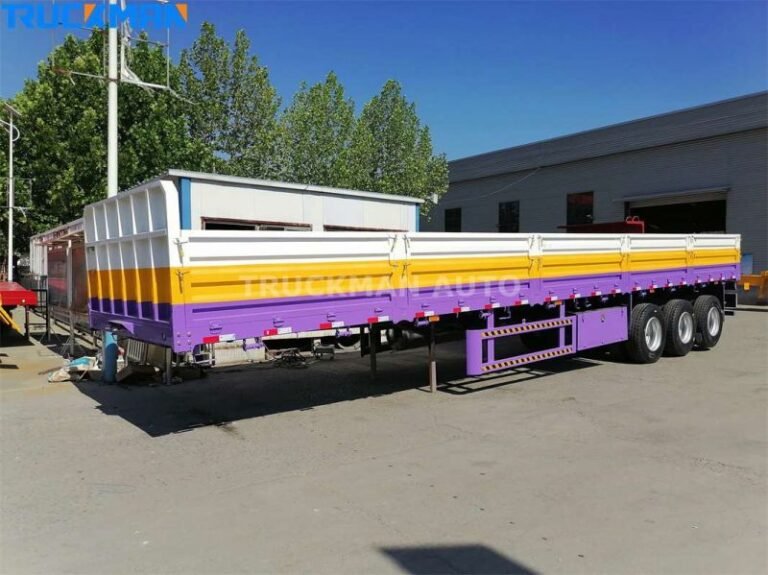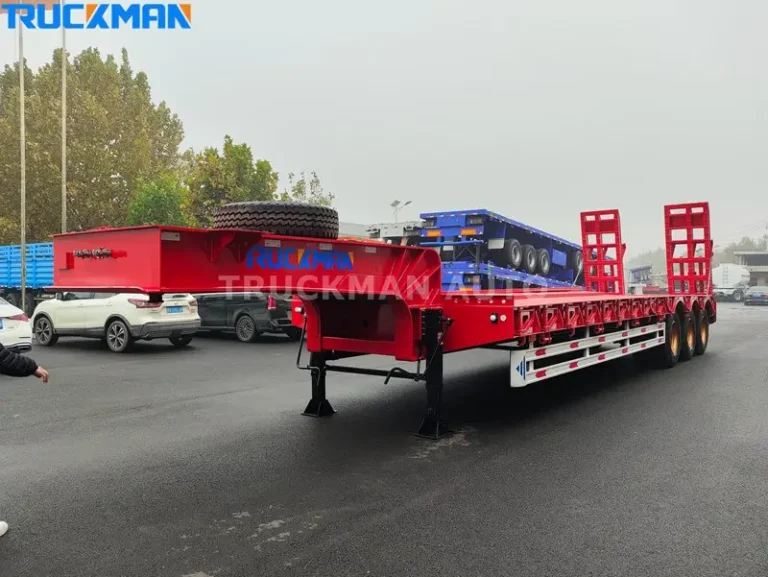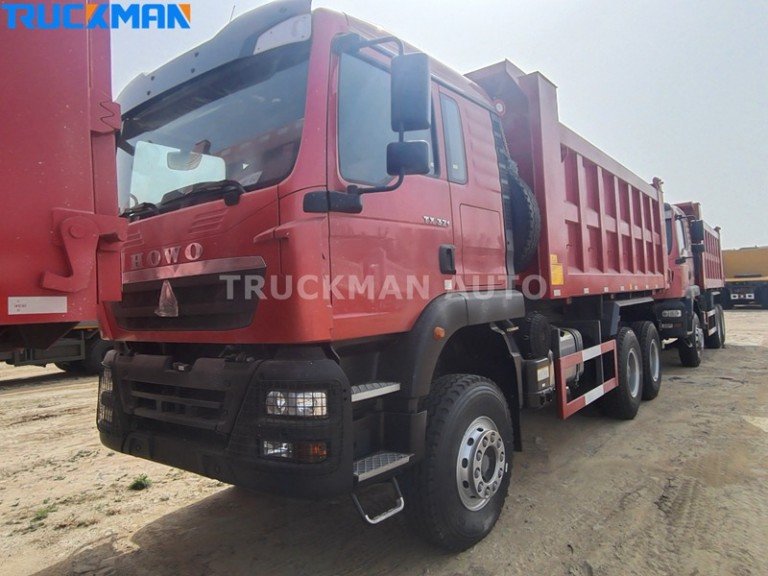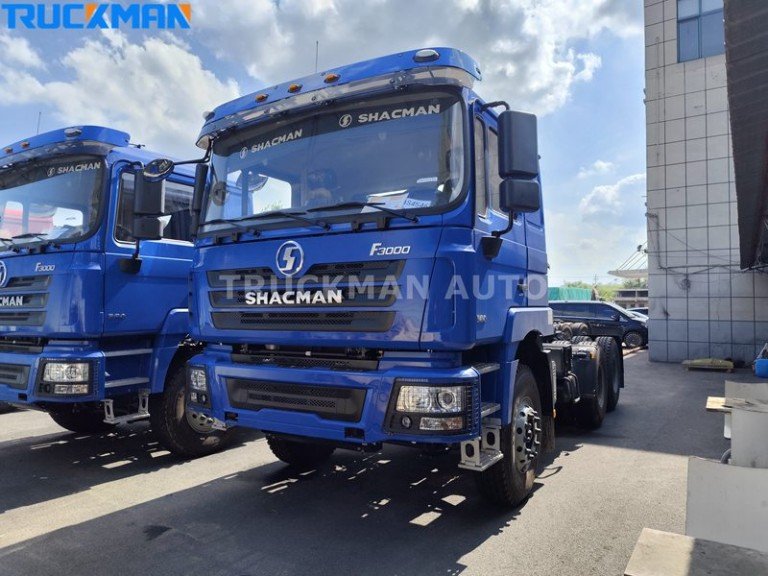In the logistics and transportation industry, choosing the right semi-trailer is crucial. Whether it’s for long-haul transportation, bulk cargo transportation, or short-distance distribution, semi-trailer size directly affects transportation efficiency, regulatory compliance, and cost control. Understanding the different semi-trailer sizes and their application scenarios not only optimizes fleet operations, but also avoids overloading fines or transportation delays due to improper size or load.
In this guide, TRUCKMAN AUTOMOBILE will provide you with a detailed overview of standard semi-trailer dimensions, specifications for different types of trailers, and dimensional differences between major brands to help you make informed decisions.

Table of Contents
Semi-trailer Size
The size of a semi-trailer affects its loading capacity, driving safety, and regulatory compliance. For example, the average size of a semi-trailer in the U.S. transportation industry is as follows:
Length: 72 feet (including truck head and trailer)
Width: 8.5 feet
Height: 13.5 feet
Maximum Gross Vehicle Weight Rating (GVWR): 80,000 lbs.
These dimensions generally meet most state and federal transportation standards. Especially when transporting across state lines, you need to make sure that the height of the semi-trailer does not exceed the height limit of the bridge or tunnel, and that the GVWR does not exceed the legal limit.
Key Factors Affecting Semi-Trailer Size
When choosing a semi-trailer, there are two key parameters to focus on in addition to the basic length, width and height:
GVWR (Gross Vehicle Weight Rating): refers to the maximum allowable weight of trucks and trailers when fully loaded. This includes the weight of cargo, fuel tanks and the vehicle itself. the larger the GVWR, the more cargo it can carry.
GCWR (Gross Combined Weight Rating): Refers to the total weight limit for trucks and trailers. Knowing the GCWR helps avoid overloading while optimizing transportation efficiency.
Dimensions of different types of semi-trailers
Different types of trailers are suitable for different transportation needs. The following are common trailer types and their dimensional characteristics:
Flatbed Trailers
Length: 48 – 53 feet
Width: 8.5 feet
Maximum weight capacity: 50,000 lbs.
A flatbed trailer is a trailer without sidewalls or a roof. Ideal for transporting large equipment, construction materials and other weatherproof cargo. Loading and unloading cargo is easier due to the no sidewall construction. However, cargo needs to be secured with straps or protective netting to prevent slipping during transportation.
Low Chassis Trailer
Length: 40 – 53 feet
Width: 8.5 – 10 feet
Maximum weight capacity: 45,000 – 85,000 lbs.
Deck Height: 18 – 24 inches
The lowboy trailer is ideal for extra tall cargo such as heavy machinery and construction equipment. Their low-profile design allows taller loads to pass over bridges or tunnels without going over the top. However, due to the low chassis, off-road capability is weak.
Step Deck Trailer
Length: 48 – 53 feet
Width: 8.5 feet
Height: 10 feet 6 inches
Maximum weight capacity: 48,000 lbs (up to 65 tons depending on number of axles)
Step Deck Trailers feature a step down area between the cab and cargo area. Making it more suitable than a standard flatbed trailer for transporting taller cargo such as construction equipment or wind turbines.
Dry Van
Length: 48 – 53 feet
Width: 8.5 feet
Height: 13.5 feet
Maximum weight capacity: 42,000 – 45,000 pounds
Dry vans are the most common enclosed trailers for transporting food, electronics, furniture, and other environmentally-demanding goods. Its enclosed structure provides good protection from wind and rain, but access during loading and unloading is only possible through the rear door.
Choosing the right semi-trailer
For logistics companies, choosing the right semi-trailer is not only about transportation efficiency, but also about operating costs and regulatory compliance. Here are some key considerations:
Type of goods to be transported: For example, heavy machinery is suited to a low-chassis trailer, while fragile goods are better suited to an enclosed dry van.
Route planning: When transporting across regions, you need to be aware of size restrictions in different areas. Avoid incurring extra costs or facing traffic tickets for exceeding limits.
Fuel Efficiency: Different trailer types have different aerodynamics, which may affect the cost of fuel consumption.
Maintenance and Used Market: Choosing a model with lower maintenance costs and higher availability on the used market can help reduce long-term operating costs.
Conclusion
Semi-trailer size is critical in the logistics and transportation industry. Different types of trailers are suitable for different cargoes and transportation needs. Enterprises should choose the right semi-trailer based on cargo characteristics, regulatory requirements and cost factors. By choosing semi-trailers appropriately, logistics companies can improve transportation efficiency, reduce operating costs And ensure compliance, so as to take advantage of the competition in the market.
If you have any questions about semi-trailers, you can also contact TRUCKMAN AUTOMOBILE for professional semi-trailer selection advice.






